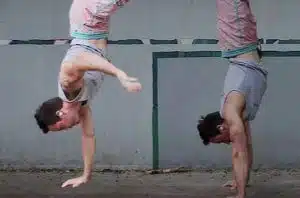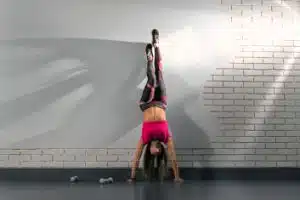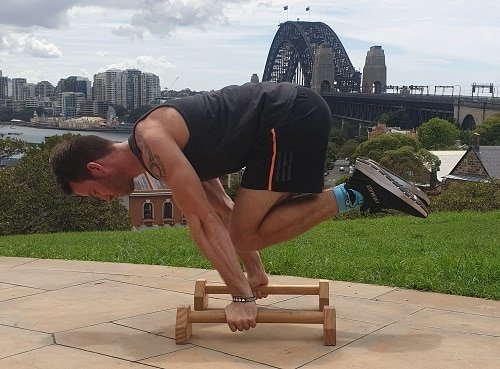
Strong Lifts 5×5 is one of the most famous weightlifting programs on the web, using compound moves it has been proven to get results time and time again.
What better workout to start our Weightlifting Workouts Converted to Calisthenics than the one that many serious weightlifters will have followed.
The Original Workout
The 5×5 is a workout that has been around a long time. It’s a proven number of sets and reps to get great strength results.
Mehdi at StrongLifts.com wrote the most in-depth tutorial into a program that features just 5 basic moves:
- Squat
- Bench Press
- Barbell Row
- Overhead Press
- Deadlift
With two workouts repeated every two days:
Workout 1
- Barbell Squat – 5×5
- Bench Press – 5×5
- Barbell Row – 5×5
Workout 2
- Barbell Squat – 5×5
- Overhead Press – 5×5
- Deadlift – 1×5
Calisthenics Workout
So the rules for this series is I have to keep as much of the original plan as I can and just adjust the exercises.
The Exercises
In calisthenics we have to change the exercise to keep making it more difficult.
With a plan that limits you to 5 reps, you may need to make small adjustments to the exercise to make it more difficult.
For more information on how to do this, we have a guide on how to progress bodyweight exercises here.
For each exercise, I shall provide some example progressions you can use.
Alternatively, you can use your own progressions.
For the exercises where you have to do both sides, you should build up to doing 5 each side.
Pistol Squat Progressions
We’re going to replace the Barbell Squat with Pistol Squats.
They work pretty much the same muscles, with a bit less emphasis on the big muscles and a lot more emphasis on the stabilising muscles in the hip and ankle due to the one leg nature.
The pistol squat also requires more flexibility than the barbell squat.
We have a complete pistol squat progression guide here you can follow, otherwise here are some progressions to get you from absolute beginner to insane levels of strength and flexibility.
- Bodyweight Squat
- Static Lunge
- Bulgarian Split Squat
- Single Leg Step Down
- Partial Pistol Squat
- Assisted Pistol Squat
- Elevated Pistol Squat
- Wushu Pistol Squat
- Pistol Squat
- Strict Pistol Squat
- Shrimp Squat
- Assisted Dragon Pistol Squat
- Dragon Pistol Squat
- Turbo Shrimp Squat
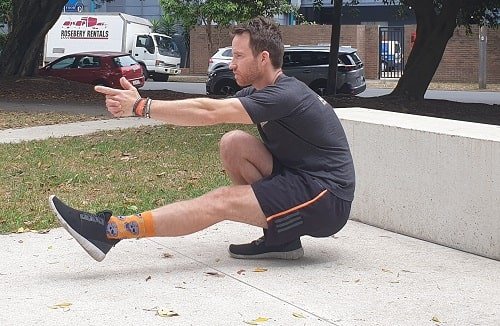
Each one of these exercises can be progressed in many ways to adjust the difficulty, for example by increasing/decreasing the range of motion.
One Arm Push-up / Planche Push-up Progressions
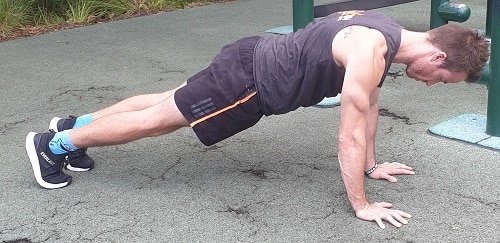
We’re going to replace the bench press with push-ups, however unlike standard push-ups, we won’t adding reps to increase the difficulty, we will be making the exercise harder.
Here are some progressions to get you going, we have tutorials for some of these, for the others search on YouTube.
- Incline Push-up
- Push-up
- Close Hand Push-up
- Archer Push-up
- Lever Push-up
- One Arm Push-up (Legs wider than shoulder-width
- Tuck Knee Planche Push-up (Parallel Bars)
- Pike Planche Push-up (Parallel Bars)
- One Arm Push-up (Legs shoulder-width, minimal hip twist)
- Advanced Tuck Planche Push-up (Parallel Bars)
- Straddle Planche Push-up
- Planche Push-up
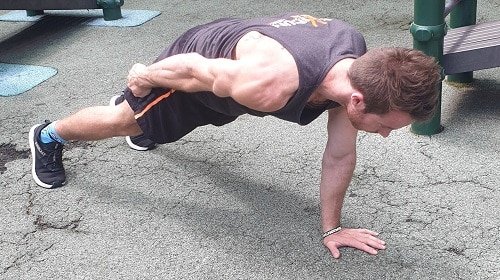
The later progressions will require very small adjustments to make them harder, for example, moving the legs one cm closer for your one arm push-ups.
Inverted Rows
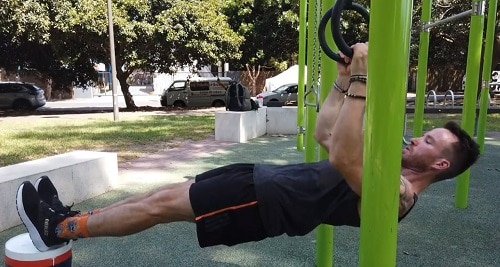
The inverted row is very similar to the barbell row, except you’re rowing yourself to the bar, rather than the other way around.
It works almost identical muscles, except in the later progressions you will have to use your core muscles a lot more to help stabilise.
Here are some progressions to follow, we have some tutorials for these, for the rest search them on YouTube.
- Standing Rows
- Inverted Row (move your feet further under the bar to progress)
- Feet Elevated Inverted Row
- Archer Rows
- Lever Rows
- Standing One-Arm Rows (Legs wider than shoulder-width)
- Tucked Front Lever Rows
- One Arm Inverted Rows (Legs wider than shoulder-width)
- Pike Front Lever Rows
- One Arm Inverted Rows (Legs shoulder-width, minimal spine rotation)
- Advanced Tuck Front Lever Rows
- Straddle Front Lever Rows
- Front Lever Rows
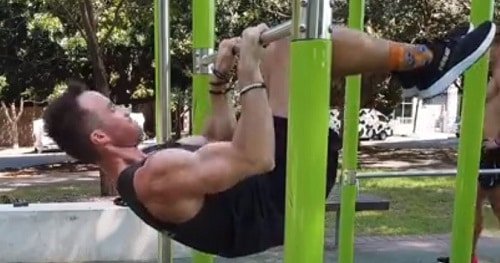
Handstand Push-up Progressions
A handstand push-up against a wall works very similar muscles to the overhead press.
Unlike the overhead press, we require a certain level of push-up capability before we start pressing overhead.
Therefore, the early progressions are the same as the one-arm push-up progressions.
I’ve kept these all against a wall, otherwise, we’re sacrificing some strength for balance.
I recommend working on free-standing handstand as a separate goal to this workout.
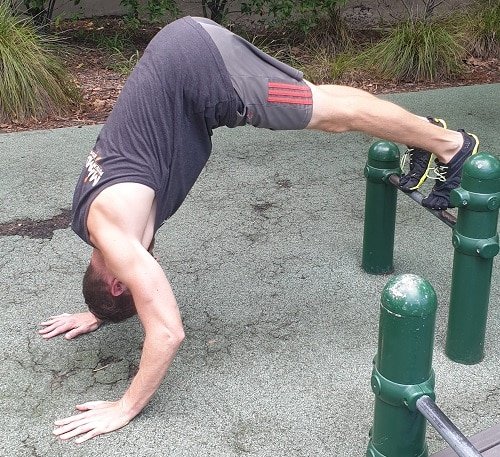
- Incline Push-up
- Push-up
- Decline Push-up
- Pike Push-up
- Feet Elevated Pike Push-up
- Partial Handstand Push-up
- Handstand Push-up
- Hands Elevated Handstand Push-up (so the head can go lower for a deeper range of motion)
- Close Grip Handstand Push-up
- Archer Handstand Push-ups
- Lever Handstand Push-ups
- One Arm Handstand Push-up
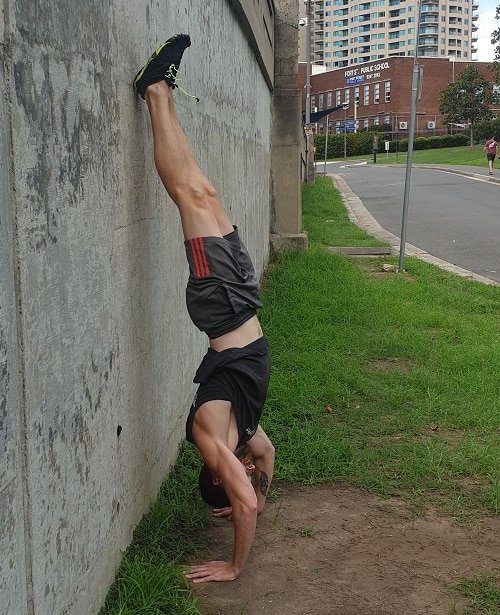
The lever handstand push-up can be started with one arm out to the side and pushing 5 reps to the working arm before swapping. It can be made much more difficult by moving the arm further away and elevating.
I’ve added one arm handstand push-ups as a goal, but in reality, performing 1 rep of this exercise, let alone 5 is almost impossible, but for the world’s strongest at handstand push-ups.
One Arm Pull-up Progressions
This was the most difficult one when it comes to exercise selection.
In the original 5×5 this exercise was the Deadlift, which is a posterior chain exercise. There are some equivalents to deadlifts in calisthenics, but none of them will work your glutes as much as a deadlift.
Therefore, I went with the logical conclusion of replacing the deadlifts with pull-ups. These work the lats and back just like the deadlift, but have little to no work on the legs.
However, with Pistol Squats in both your workouts, you will get as much leg work as you need to build strong legs.
For our pull-ups, we’re going to progress from using a band, all the way through to one-arm pull-ups.
Some of these are isometric holds, in that case, build up the to the time specified.
You can do them with various grips to increase difficulty, pull-ups = overhand, chin-ups = underhand.
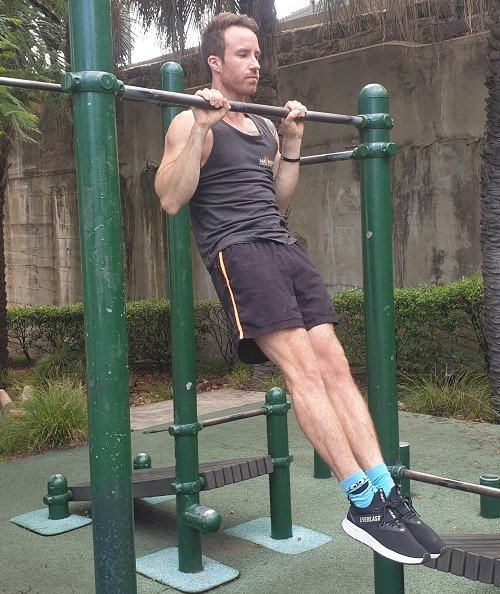
- Band Chin-up
- Underhand Flex-Hang – 10s
- 2 Point Flex Hang – 10s each
- 3 Point Flex Hang – 10s each
- Half Chin-up (Start at Top)
- Dead-hanging Chin-up
- Dead-hanging Pull-up
- Commando Pull-up (each side)
- Archer Pull-ups
- Lever Pull-ups (using a towel over the bar, to start gradually lowing the assisting hand.
- One Arm Flex Hang – 10s both sides
- 2 Point One Arm Flex Hang – 10s each, both sides
- 3 Point One Arm Flex Hang – 10s each, both sides
- Dead-hanging One Arm Chin-up
- Dead-hanging One Arm Pull-up
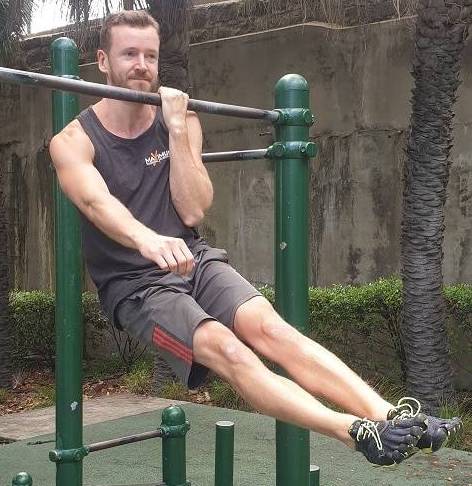
Workout 1
- Pistol Squat Progressions – 5×5
- One Arm / Planche Push-up Progressions – 5×5
- Inverted Rows – 5×5
Workout 2
- Pistol Squat Progressions – 5×5
- Handstand Push-up Progressions – 5×5
- One Arm Pull-up Progressions – 5×5
Critique
The 5×5 converted to calisthenics delivers a great full-body workout that will build strength and a bit of size.
Our calisthenics fundamentals include a vertical and horizontal 5×5 which are not too dissimilar to this workout.
In our own calisthenics fundamentals workouts, we added an extra anterior chain (muscles at the front of the body) and posterior chain (muscles at the back of the body) exercise.
This is to ensure that the “core” muscles are continued to be strengthened. However, the 3 exercises in this workout will still workout your anterior and posterior chain, just to a lesser degree.
Calisthenics Skills
If you decide to follow this program, exercising every other day leaves little time for your calisthenics skills, so where should we insert them into the program?
I think for this level of intensity, the one day rest is vital to include, so I wouldn’t add them in there.
After a session, you’re not going to have much strength left to perform at your best for the skills, whereas if you do it before, it will affect your workout.
However, if the skills are important to you, then I would advise doing them before the workout. You may have to reduce the intensity of some of your 5×5 exercises.
One important thing to remember is that your skills will come easier if you are stronger, so try not to skip your strength workouts.
Weight-Lifting Workouts Converted to Calisthenics
So this was the first in our new series.
We plan to write several articles, converting some of the most famous workout programs to calisthenics.
Do you have a favourite workout you’d like to see as a calisthenics workout? Let us know in the comments below or get in touch with us through the contact page.

